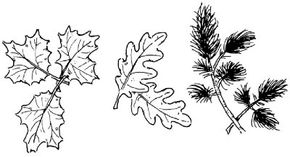
From a tiny seed can grow an enormous tree. How does it happen? These fun tree activities for kids will reveal the many mysteries hidden in seeds and trees. They'll also remind you how important nature's giants really are.
Trees, like all other plants, need sunlight and carbon dioxide to make their own food. In the process, trees take carbon dioxide from the air and put back oxygen for us all to breathe.
Advertisement
Follow the links below to find tons of exciting, educational tree activities for kids and the whole family. Get outdoors to enjoy the wonders of trees!
Choose your favorite tree and journal its life and growth for the year.
Make your own field guide of pictures, descriptions, and information about the trees on your block.
Emulate Robert Frost and write an ode to your beautiful wooded friends.
Research your official state tree and find it in nature.
Tap a maple tree to make homemade syrup for a special family breakfast.
Bloom winter cherry and pussy willow twigs indoors to enjoy an early spring.
Learn how to grow a mango, papaya, or pomegranate tree from a simple seed.
Read books about trees and see how many interesting tree facts you can learn.
Craft a book of photos, rubbings, and leaves from your child's favorite tree.
Ready to embark on a study of trees with your family? Start by adopting a neighborhood tree in the next section of tree activities for kids.
For more fun nature crafts and kids' activities, check out:
Advertisement



